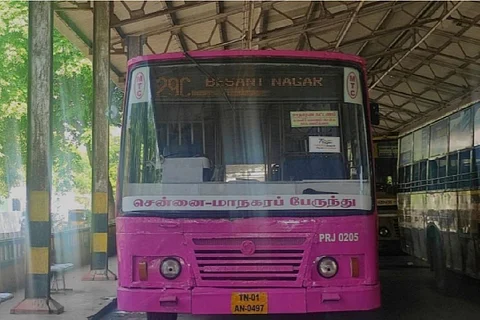

Chennai houses a quarter of Tamil Nadu's population, who are reliant on both public and private means of transport for their everyday commute. The urban population makes considerable contributions to the city’s pollution, traffic congestion, lapse of road safety, and health hazards. For the city to be sustainable, it is imperative that a large section of commuters use public transport. However, a recent study titled “Navigating Uncharted Territories: Accessing Public Transport Information in Chennai,” conducted by the Citizen, consumer and civic Action Group (CAG) finds that while regular commuters familiar with the system might continue with it despite its many problems, commuters who are 30 or younger are making the switch to private transport. The study, authored by Sumana Narayanan, senior researcher at CAG, states, “Public transport needs to recruit new users if Chennai is to make the modal shift to sustainable mobility.” Engaging new users has become difficult as private transport offers a more efficient commute. Recruiting new users and ensuring that they continue to use public transport will require authorities to fix some of the gaps that currently exist. CAG’s study focused on the information gap that is currently inhibiting new users from making the shift from private to public transport.
The study notes that most commuters prefer asking friends and family for information about public transportation. Online sources were mainly used by people aged 21-30. Among these online spaces, the most used source was Google, while very few relied on other apps. New users require comprehensive information on routes, stops, fare, and timings to engage with the public transportation system in the city. “Information would also be important to ensure such new commuters stay engaged with public transport, and don’t switch to private transit,” the study observed. The authors interviewed 506 commuters who use different public transport systems in order to understand the various means by which they access information. There are various sources of information available on the internet and the government has come up with multiple apps to provide information about the public transportation systems in the city. However, the information on the websites and apps do not provide adequate information to plan a journey, states the study. The study by CAG took four online government information sources on three different modes of public transport in the city and measured their efficiency through a survey.
The Metropolitan Transport Corporation (MTC) is the agency that operates public bus services in Chennai. It has a website where users can look up bus schedules and find information about routes and stages. The fares listed on the website are based on a 2018 government order. Concession fares are also covered in detail. However, the website requires users to know the bus route number, which would be challenging for first-time users of public transportation. MTC also recently launched the mobile app Chennai Bus. It requires the device location to be turned on and it opens to a map with a list of nearby bus stops. The user has to choose one bus stop to see a list of routes and choose one to see a list of stops. If a live tracking facility is installed in that route, one can see when the next bus is expected. However this has not been installed on many routes. Fares are not mentioned and the ticket cannot be purchased online,the study states.
As for the Suburban Railway and Mass Rapid Transit System (MRTS), the Southern Railways website is said to have details of the timings. However, the study observes that there is no further information about that on the website. Chennai Metro has the most comprehensive website, according to the study. It provides details of fares, rules, facilities available for parking, time table and more. But, there is no indication on the line or route that is to be taken. The user has to go to the home page and visually map the results on the network map. The fare is also presented in an elaborate PDF file that takes time to comprehend. Detailed information on the various cards available and their utility are not mentioned, and the user has to access PDFs to know the details.
The efficiency of the websites and apps are dependent on the individual user’s prior knowledge about the public transportation system in the city. They are often not user-friendly, making them counterproductive. The information on the websites is not important for regular users well acquainted with the system. The target group should be new users who require a simpler and all-inclusive set of information that would make their commute easier.
The study comes up with certain suggestions to make public transportation information accessible to all. It suggests that multiple modes of communication, including websites, apps, and sign boards be made available to convey information about public transportation in an integrated manner. The study also recommends having real-time information on the websites and apps so that commuters are aware of route changes and updated timings. Additionally, the study stresses the importance of regular feedback and grievance redressal mechanisms. Interestingly, one-fifth of the study’s respondents were aware of the grievance redressal mechanism, but only seven had made attempts to use it. The details and procedures of the grievance redressal mechanism must be accessible to the public. Finally, the study points to the importance of regular training for staff in order to ensure an efficient system.